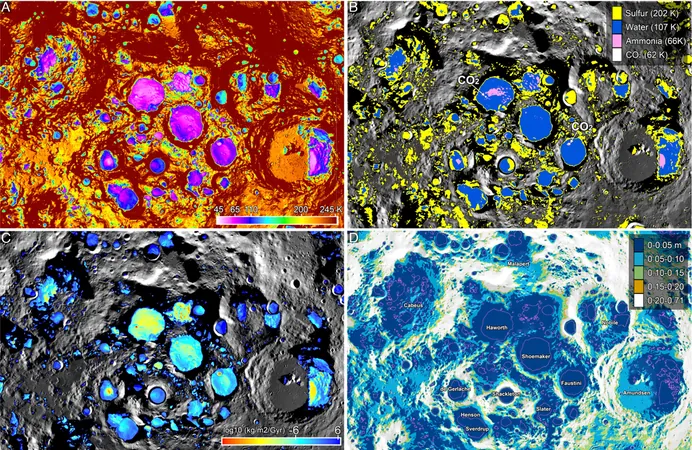
The Shocking Connection Between Hyperglycemia and Diabetic Retinopathy Exposed!
2024-12-18
Author: Mei
Introduction
In groundbreaking research published in JAMA Ophthalmology, a definitive link has been established between hyperglycemia and the onset of diabetic retinopathy (DR), the leading cause of visual impairment and blindness among individuals with diabetes. This alarming discovery sheds light on the crucial role of blood sugar management, particularly for the 20% of young adults diagnosed with type 1 diabetes (T1D).
Study Overview
Despite advances in treatment options for DR, the risks associated with high blood sugar levels remain a pressing concern. The study, which analyzed data from the Swedish National Diabetes Register, involved a cohort of over 9,300 patients diagnosed with T1D for less than five years between 1998 and 2017. Participants were required to have attended at least four screenings over an extensive follow-up period, providing a rich dataset for analysis.
Key Findings
The findings revealed that 33% of the young participants had developed some form of retinopathy by the end of the study, emphasizing the critical need for stringent glucose control. Notably, the strongest risk factor identified was the mean level of hemoglobin A1C (HbA1C)—a marker of long-term glucose control—with a significant odds ratio of 1.81 for each standard deviation increase. This finding suggests that even minor fluctuations in blood sugar can dramatically elevate the risk of vision-threatening conditions.
Other Risk Factors
In addition to hyperglycemia, the study identified other risk factors that could exacerbate the potential for developing retinopathy. These included: - **Hypertension:** Mean systolic blood pressure exhibited a risk elevation (adjusted OR of 1.24) for developing any retinopathy. - **Body Mass Index (BMI):** Higher average BMI levels also correlated with increased risk (adjusted OR of 1.30). - **Smoking:** The habit was linked with a notable increased risk (adjusted OR of 1.20). - **Diabesity:** The combination of diabetes and obesity revealed a concerning trend, as maintaining a healthy weight becomes increasingly crucial.
Protective Factors
Interestingly, increased levels of high-density lipoprotein (HDL) cholesterol demonstrated a protective effect against retinopathy, highlighting the importance of overall cardiovascular health.
Study Limitations
However, the researchers noted some limitations in their study. Certain essential data, like abdominal fat measurements and real-time glucose monitoring, were unavailable for analysis, potentially leaving gaps in understanding the full picture of risk factors.
Conclusion
This study confirms hyperglycemia as the dominant risk factor for retinopathy but emphasizes the need to address obesity, overweight, and hypertension not just for heart health but also as a strategy to diminish the risk of vision loss.
Call to Action
Don't Let Your Blood Sugar Steal Your Sight! As diabetes rates continue to surge globally, understanding and managing your health risks has never been more critical. Regular check-ups, maintaining a balanced diet, and monitoring your blood sugar levels could be your first steps towards safeguarding your vision!






 Brasil (PT)
Brasil (PT)
 Canada (EN)
Canada (EN)
 Chile (ES)
Chile (ES)
 España (ES)
España (ES)
 France (FR)
France (FR)
 Hong Kong (EN)
Hong Kong (EN)
 Italia (IT)
Italia (IT)
 日本 (JA)
日本 (JA)
 Magyarország (HU)
Magyarország (HU)
 Norge (NO)
Norge (NO)
 Polska (PL)
Polska (PL)
 Schweiz (DE)
Schweiz (DE)
 Singapore (EN)
Singapore (EN)
 Sverige (SV)
Sverige (SV)
 Suomi (FI)
Suomi (FI)
 Türkiye (TR)
Türkiye (TR)